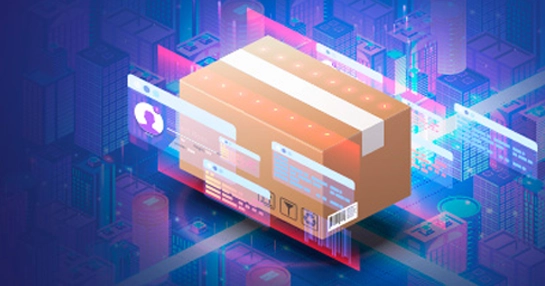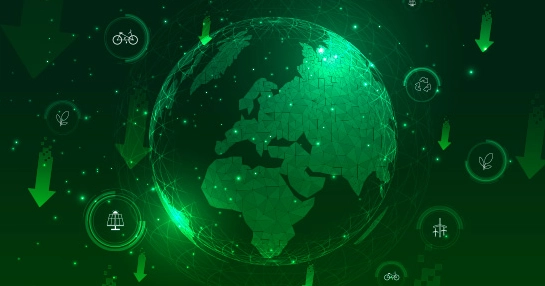-
GEP Software
-
- Procurement Software
- Direct Procurement Software
- Indirect Procurement Software
- Unified Source-to-Pay
- Source-To-Contract Software
- Procure-to-Pay
- Midsize & High Growth Enterprises
- Key Capabilities
- Spend Analysis
- Sourcing
- Contract Lifecycle Management
- Supplier Lifecycle Management
- Third-Party Risk Management
- Purchasing
- Payments
- Data Analytics and Reporting
- Do more with GEP SMART
- Intake Management & Orchestration
- Intelligent Category Management
- Tail Spend Management
- Cost Data & Analytics (GEP COSTDRIVERS)
- AI-First Supply Chain Management
- Supply Chain Visibility and Execution
- Logistics Visibility
- Inventory and Warehouse Management
- GEP Multienterprise Collaboration Network
- Supply Chain Control Tower
- Field Services
- Supply Chain Collaboration & Planning
- Supply Chain Planning
- Purchase Order Collaboration
- Forecast Collaboration
- Capacity Collaboration
- Quality Management Software
- Should-Cost Modeling
- Direct Material Sourcing
-
-
GEP Strategy
-
GEP Strategy
Unrivaled supply chain and procurement expertise + the transformative power of AI
Supply Chain Consulting
- Environmental, Social and Governance
- Sustainability Consulting Services
- Socially Responsible Sourcing
- Scope 3
- Demand and Supply Chain Planning
- Collaborative Planning
- Source To Contract
- Procure To Pay
- Inventory Strategy & Management
- Operations & Manufacturing Excellence
- GEP Total Inventory Management Solution
- Network Strategy & Optimization
- Warehousing & Transportation Management
-
-
GEP Managed Services
-
GEP Managed Services
World-class skills, experience and know-how — amplified by the power of AI
-


Total Procurement Orchestration: The Next Evolution in Source-to-Pay
Disconnected procurement workflows hold organizations back but AI-powered total procurement orchestration is changing the game.
This approach synchronizes every step of the source-to-pay lifecycle using AI-driven insights. From streamlining requests to automating approvals, AI eliminates inefficiencies, predicts needs, and empowers smarter decision-making with real-time data.
This podcast based on a GEP paper explores how AI transforms procurement across three levels: intuitive intake, full automation, and integrated collaboration.
What You’ll Hear:
- AI-powered workflows that save time and ensure compliance.
- Predictive analytics for optimized spending and demand planning.
- Enhanced collaboration that drives strategic, data-informed impact.
This is a audio recording of a recent podcast.
PODCAST SUMMARY
The future of procurement is transforming the field from a traditional cost center into a strategic powerhouse that drives value, innovation, and competitive advantage for organizations. Traditionally, procurement has been burdened by outdated systems, inefficiency, and cumbersome processes. These legacy systems, often described as clunky and confusing, hinder efficiency and transparency, which impacts the bottom line. However, the emergence of total procurement orchestration offers a revolutionary solution to these challenges.
What Is Total Procurement Orchestration?
Total procurement orchestration synchronizes every step of the procurement process, creating a seamless, harmonious workflow akin to a symphony. From initial purchase requests to final payments, every element is interconnected and driven by data. For the average employee, this means a significant shift in day-to-day activities. The tedious, bureaucratic processes of the past—like endless paperwork and complex approval systems—are replaced by intuitive, efficient systems. This modernized approach resembles online shopping but tailored for workplace purchases.
The orchestration system not only simplifies processes but also enhances decision-making through data insights. Employees benefit from streamlined workflows, guided by intelligent systems that suggest suppliers aligned with company policies and values, such as sustainability. By automating routine tasks, procurement professionals can focus on strategic, high-value work.
The Three Levels of Orchestration
The transformation unfolds across three levels:
1. Streamlining Intake: At this level, procurement becomes intuitive, anticipating needs and offering recommendations. It reduces manual input, speeds up request processes, and ensures compliance with company policies.
2. Full Automation: The next step eliminates manual intervention by automating the entire procurement lifecycle—from request to payment. This level provides complete visibility into spending and operations, allowing procurement teams to shift their focus from transactional tasks to strategic planning.
3. Breaking Down Silos: At the highest level, procurement integrates across departments and external partners. It evolves from being a gatekeeper to becoming a collaborative partner, aligning with company strategies and enhancing the supply chain's overall efficiency.
Real-World Application
Consider the example of a lab worker needing a high-precision scale. Under the traditional system, this process would involve contacting suppliers, comparing prices, and navigating paperwork. With orchestration, the lab worker simply logs into the system, inputs their request, and lets the system handle the rest—suggesting suppliers, managing compliance, and automating approvals.
This transformation extends beyond operational efficiency. The integration of real-time data allows procurement teams to analyze spending patterns, anticipate demand spikes, and identify opportunities for cost savings, such as bulk discounts. This proactive approach turns procurement into a data-driven strategic function.
Human-Centric Transformation
A common concern about automation is its impact on jobs. However, total procurement orchestration is not about replacing people but empowering them with better tools. By offloading repetitive tasks like approvals and invoicing to AI, procurement professionals are free to focus on strategy, innovation, and building supplier relationships. This shift enables them to act as advisors, leveraging insights to spot risks, negotiate deals, and drive organizational innovation.
Real-World Impact
Companies adopting this approach are already seeing tangible benefits, including increased efficiency, reduced costs, improved compliance, and enhanced collaboration. The procurement function is no longer just about processing orders but is becoming a key player in shaping business strategies and driving competitive advantage.
Conclusion
The future of procurement is here, and it is both transformative and exciting. By embracing total procurement orchestration, organizations can unlock unprecedented levels of efficiency, data-driven insights, and strategic alignment. For procurement professionals, this is an opportunity to evolve their roles, embrace new technologies, and become leaders in this new era. The message is clear: don’t just react to change—be part of it.
TO LISTEN, Please Enter your EMAIL ID
JUST A FEW MORE THINGS ABOUT YOU








